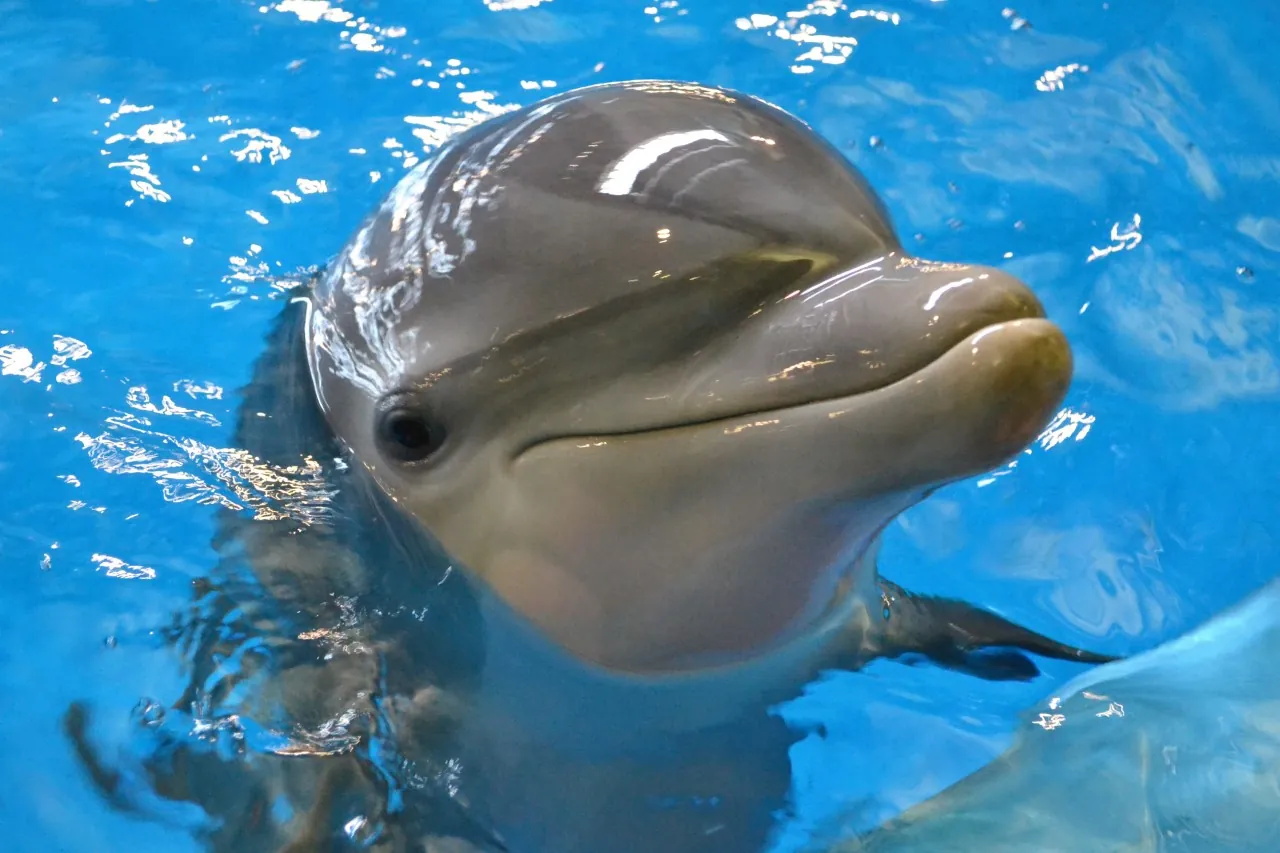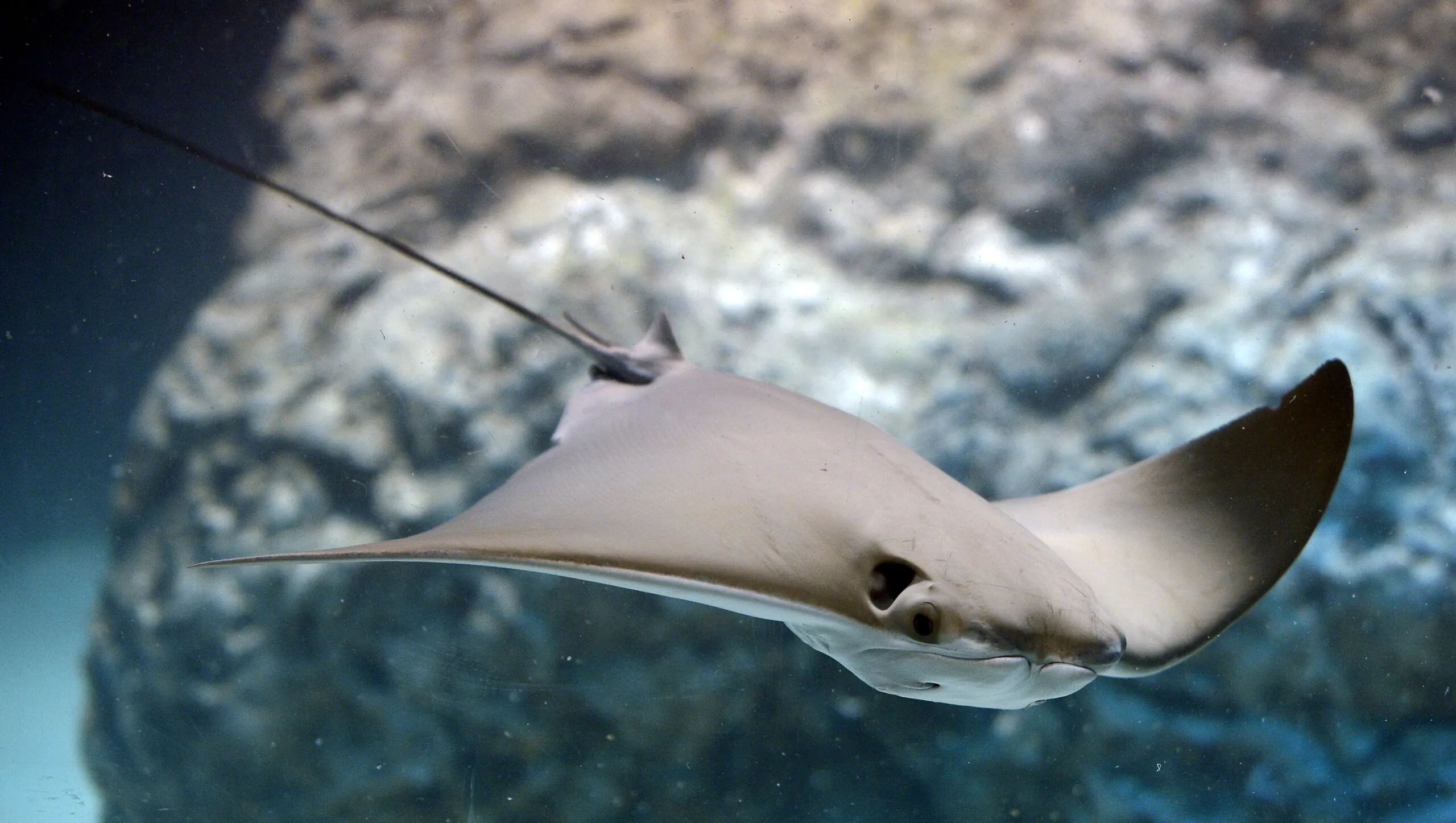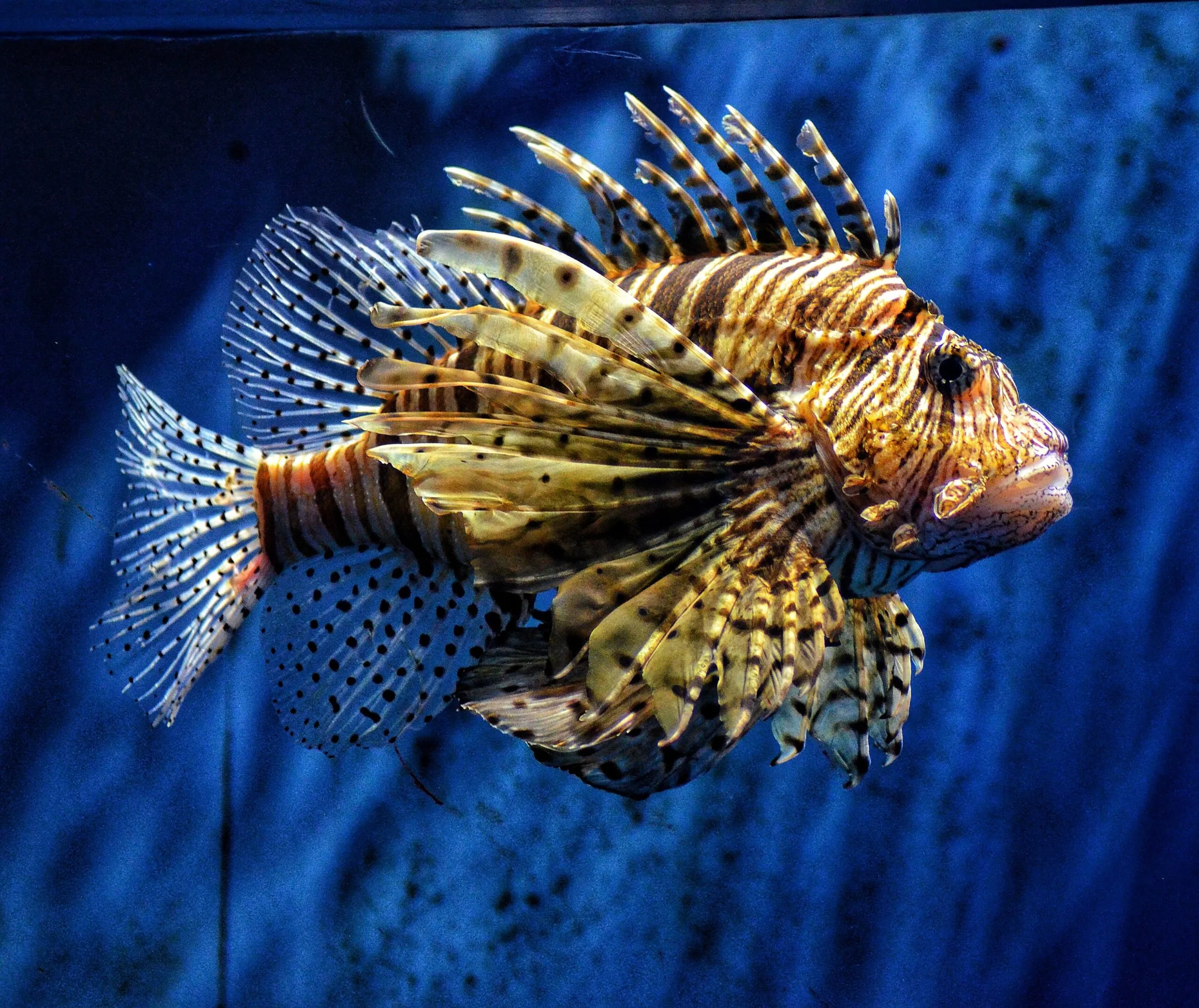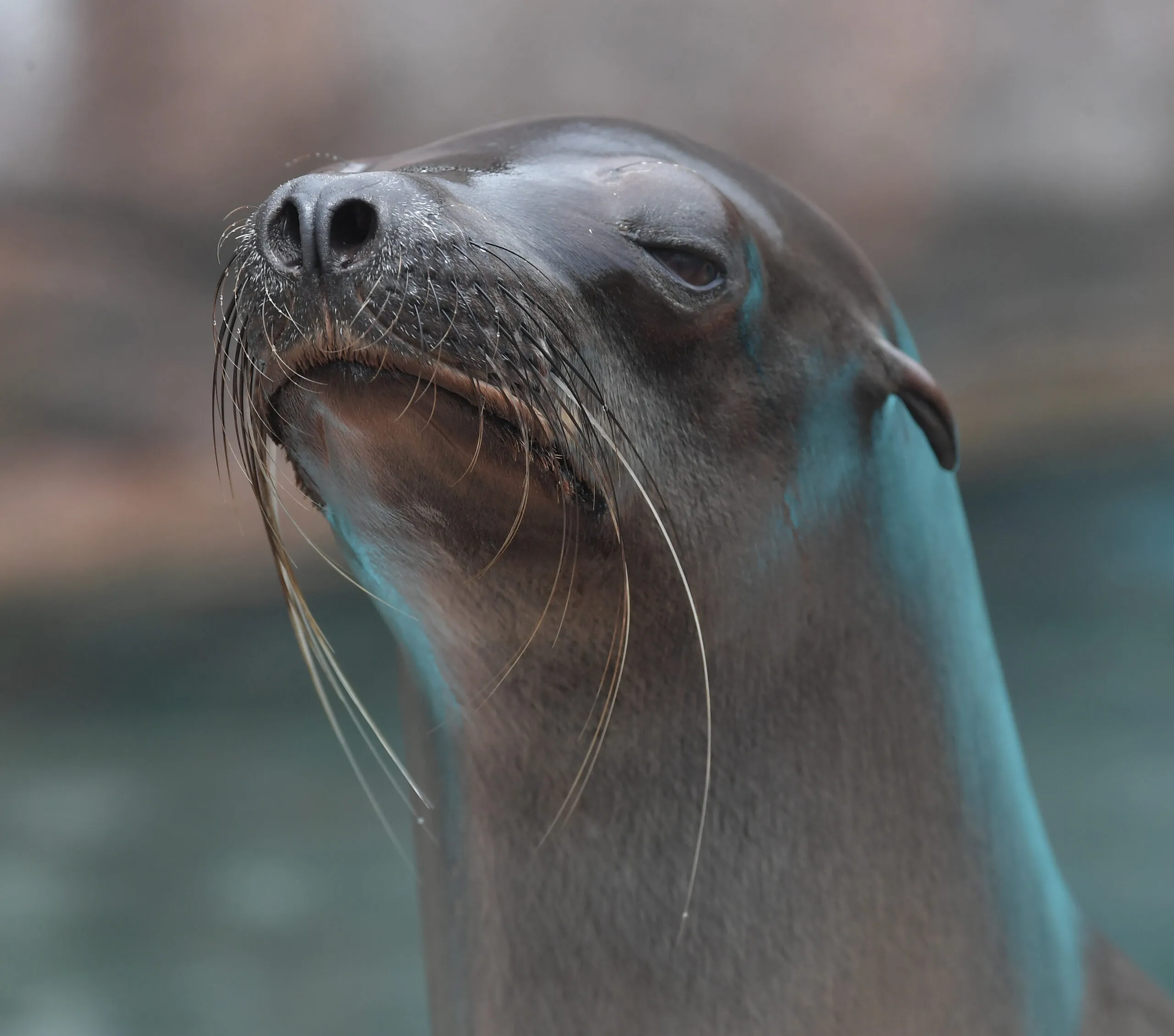-
Menu
- Plan Your Visit
- Meet The Animals
- Check Out Events
- Memberships
- About The Zoo
- Support the Zoo
- Conservation
- Education
- Groups & Private Events
- Zoo News
- Contact
- Zoo Store
- Indianapolis Prize
- Global Center for Species Survival
- Schedule
- Donate
- Membership
- Tickets

- Plan Your Visit
- Meet The Animals
- Check Out Events
- Memberships
- About The Zoo
- Support the Zoo
- Conservation
- Education
- Groups & Private Events
- Zoo News
- Contact
- Zoo Store
- Indianapolis Prize
- Global Center for Species Survival
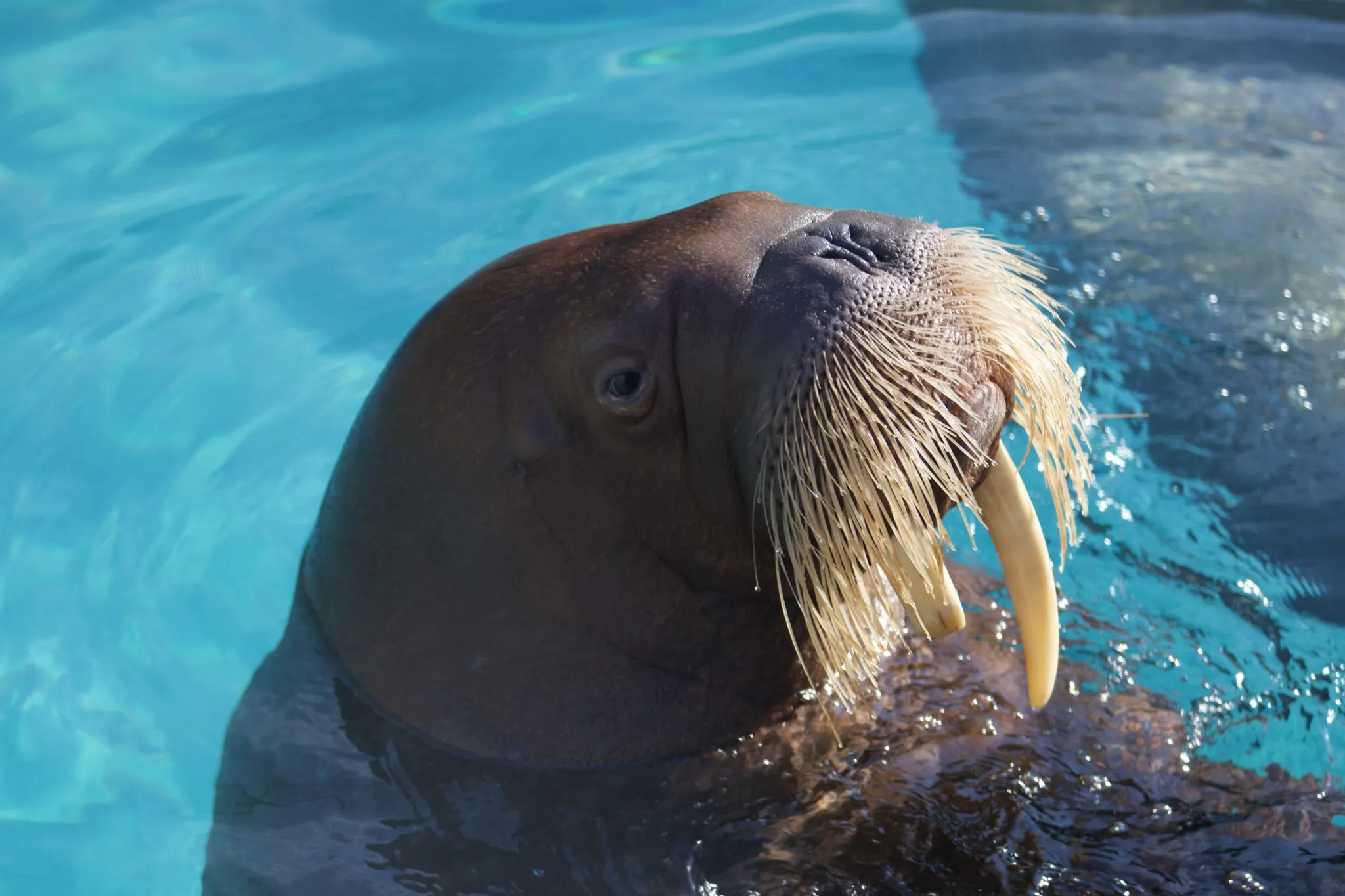
Pacific Walrus
Odobenus rosmarus divergens
About Pacific Walruses
Walruses are related to seals and sea lions. They’re easy to identify by their massive size and their tusks. These long teeth grow throughout a walrus’s life and help them figure out who’s the biggest and strongest in their group—both by sight and through a few jabs to their thick skin. Tusks are also used to help a walrus pull its body out of frigid Arctic seas and onto ice or land—often in piles with other walruses. Under that thick skin lies a layer of blubber (fat) several inches thick, which helps insulate them from the Artic chill.
Walrus hunt for clams and other mollusks along the dark ocean floor using sensitive whiskers on their muzzle called vibrissae. They use their strong tongue to suck the animals right out of their shells and swallow them whole! It can take thousands of clams each day to support an animal that can weigh 3,000 pounds or more.
Baby walruses are born after about a year and a half gestation. Mother walruses are very protective of their calves, nursing and keeping them safe from predators such as killer whales for 2 years or more. Females and young walruses spend a lot of time together in groups, floating along on sea ice between trips into the water to feed.
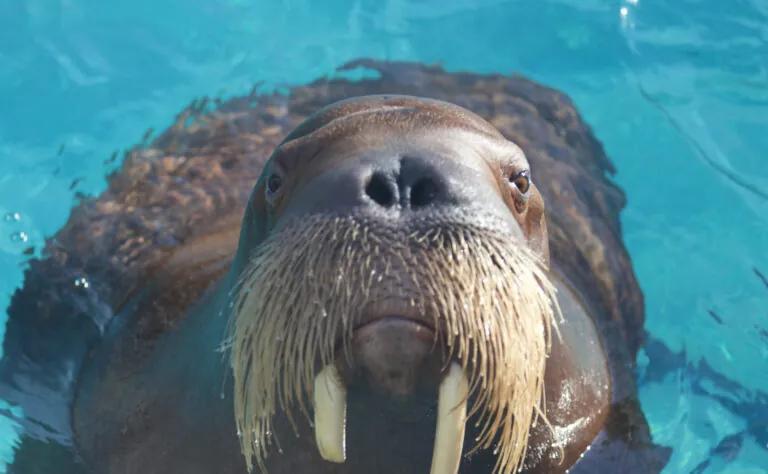
Conservation
Walruses are most threatened by the loss of sea ice due to the climate crisis. Walruses rely on sea ice to raise their young, rest and protect themselves from predators. You can reduce your contributions to climate change by using less fossil fuel in your daily life. Residents of Indianapolis also can sign up for AES Indiana’s Green Power electricity option to use more renewable energy resources for powering your home.
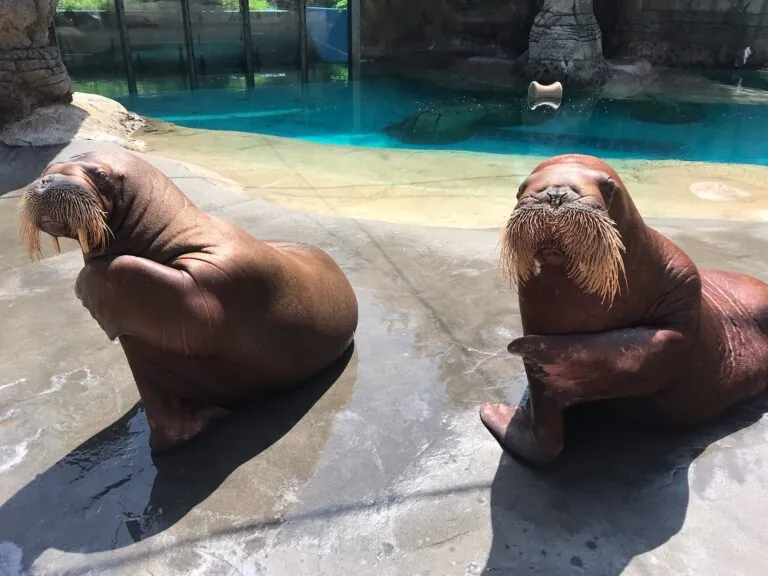
Learn more about walrus adaptations and how you can help care for ocean wildlife with sustainable seafood purchases! Don’t miss the Walrus Chat led by a Zoo educator outside Oceans during your Zoo visit.
WHERE ARE THEY AT THE ZOO?


